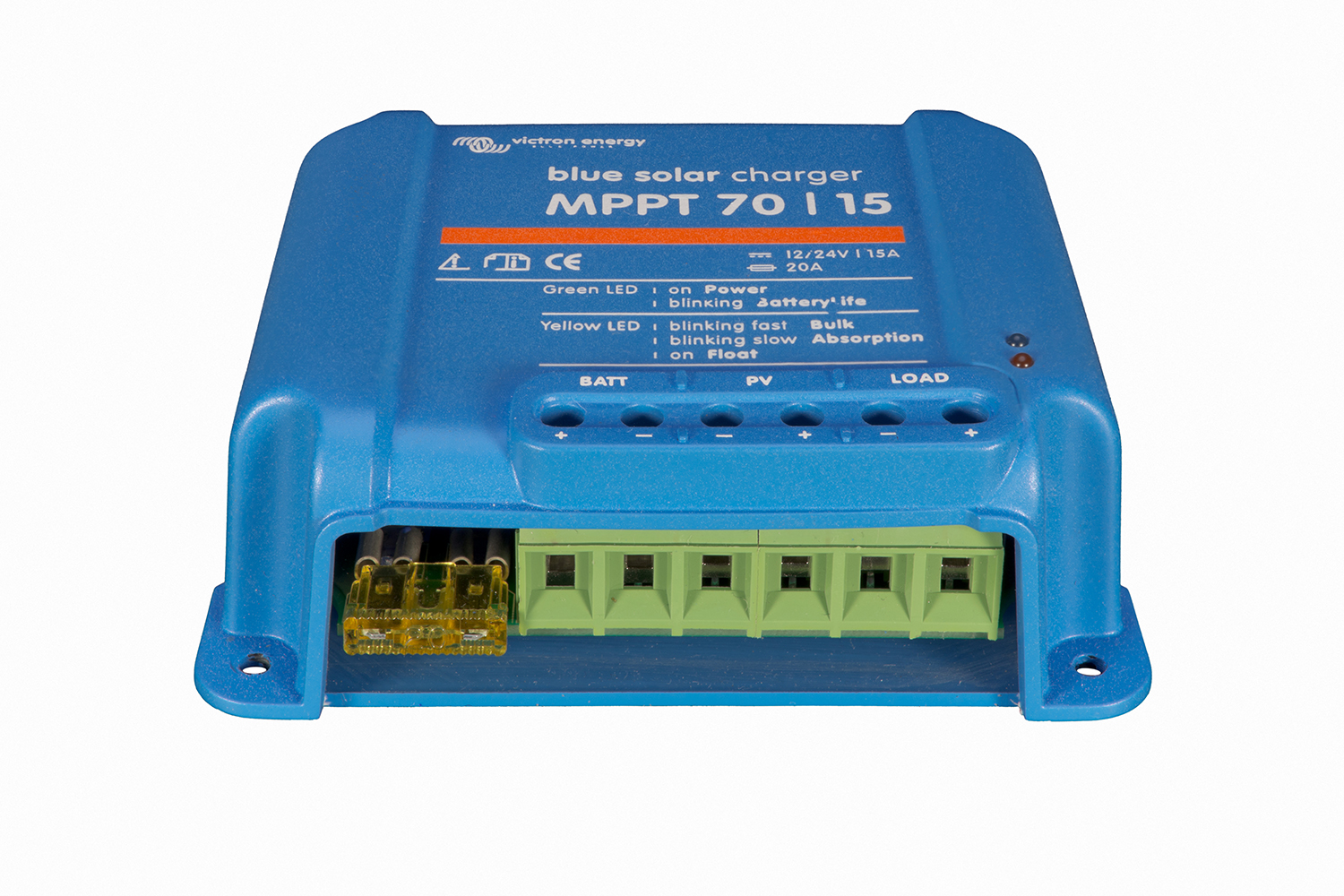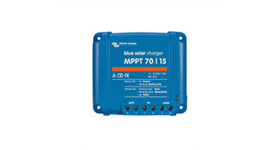Products -> Solar Charge Controllers > Victron Energy > BlueSolar MPPT 70/15
Bluesolar 70/15 - Charge controller
Ultra fast Maximum Power Point Tracking (MPPT)
BatteryLife: intelligent battery management
Resin encapsulated electronics: Protects the electronic components against the environment
Automatic battery voltage recognition : The MPPT 70/15 will automatically adjust to a 12V or a 24V system
Product features
Especially in case of a clouded sky, when light intensity is changing continuously, an ultra fast MPPT controller will improve energy harvest by up to 30% compared to PWM charge controllers and by up to 10% compared to slower MPPT controllers.
When a solar charge controller is not able to recharge the battery to its full capacity within one day, the result is often that the battery will be continually be cycled between a "partially charged" state and the "end of discharge" state. This mode of operation (no regular full recharge) will destroy a leadacid battery within weeks or months. The BatteryLife algorithm will monitor the state of charge of the battery and, if needed, day by day slightly increase the load disconnect level (i. e. disconnect the load earlier) until the harvested solar energy is sufficient to recharge the battery to nearly the full 100%. From that point onwards the load disconnect level will be modulated so that a nearly 100% recharge is achieved about once every week.
General recommendations
Two criteria are decisive on charge controllers with MPP tracking: Firstly, the total output of all connected solar modules (in Wp) must not exceed the maximum input power of the solar charge controller. Secondly, the open circuit voltage (Uoc) on all solar modules (also series-connected) must not exceed the maximum input voltage of the solar charge controller under any circumstances. Care must be taken here, especially due to the temperature dependence of the open circuit voltage on the solar modules. This voltage increases as the temperature decreases. Based on the lowest temperature which occurs during the application, the open circuit voltage of the solar module must be calculated using the temperature coefficients from the module data sheet. The maximum input voltage of the solar charge controller must be higher than this voltage.
High Voltage Strings and Grid-tie Modules
Another benefit of MPPT technology is the ability to charge batteries with solar arrays of higher nominal voltages. For example, a 12 Volt battery bank may be charged with a 12, 24, or 48-Volt nominal off-grid solar array. Grid-tie solar modules may also be used as long as the solar array open circuit voltage (Voc) rating will not exceed 75 volts (MPPT 70/15) or 150 volts (MPPT 150/70) maximum input voltage rating at worst-case (coldest) module temperature. The solar module documentation should provide Voc vs. temperature data.
Higher solar input voltage results in lower solar input current for a given input power. High voltage solar input strings allow for smaller gauge solar wiring. This is especially helpful and economical for systems with long wiring runs between the controller and the solar array.
HD Picture - Victron Energy MPPT 70/15




